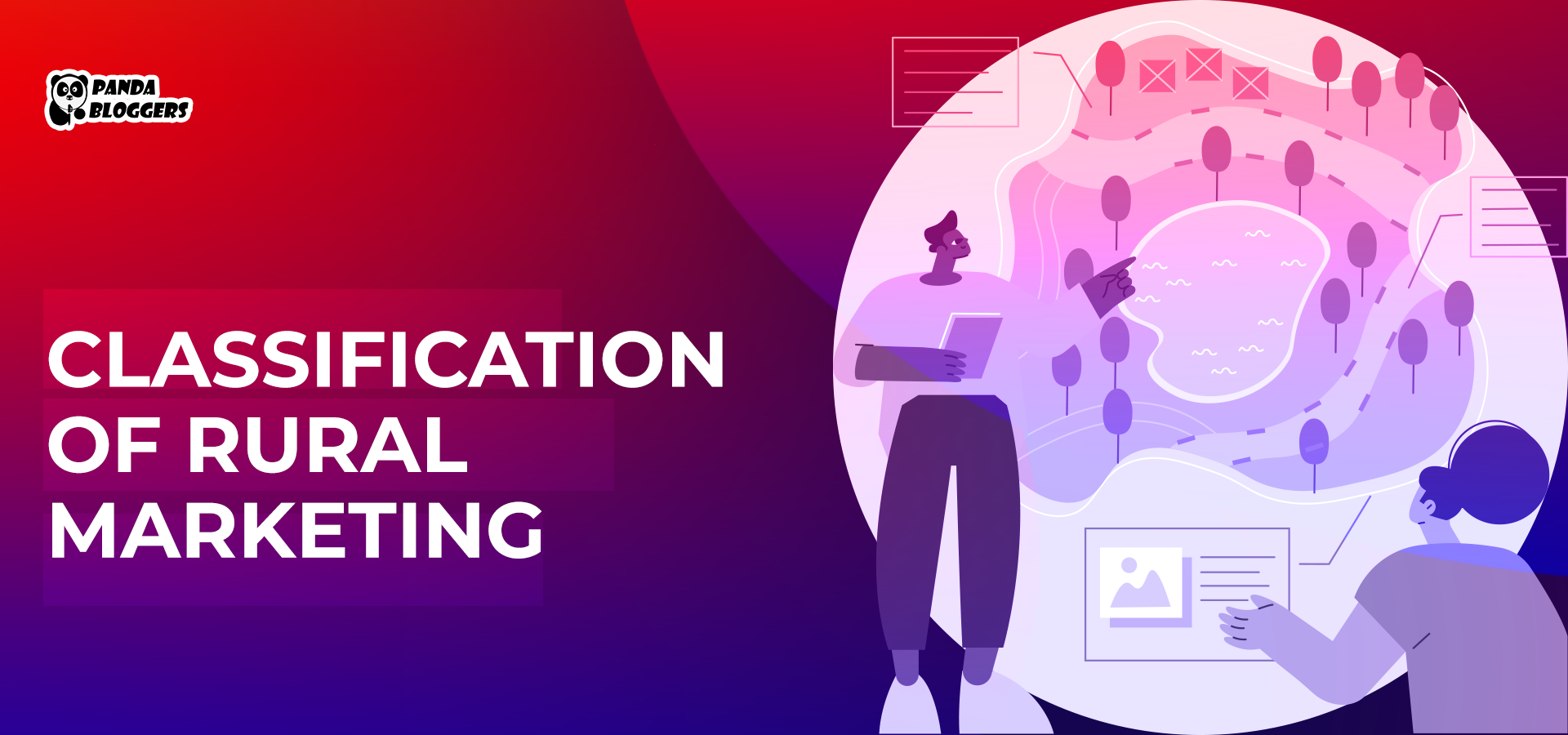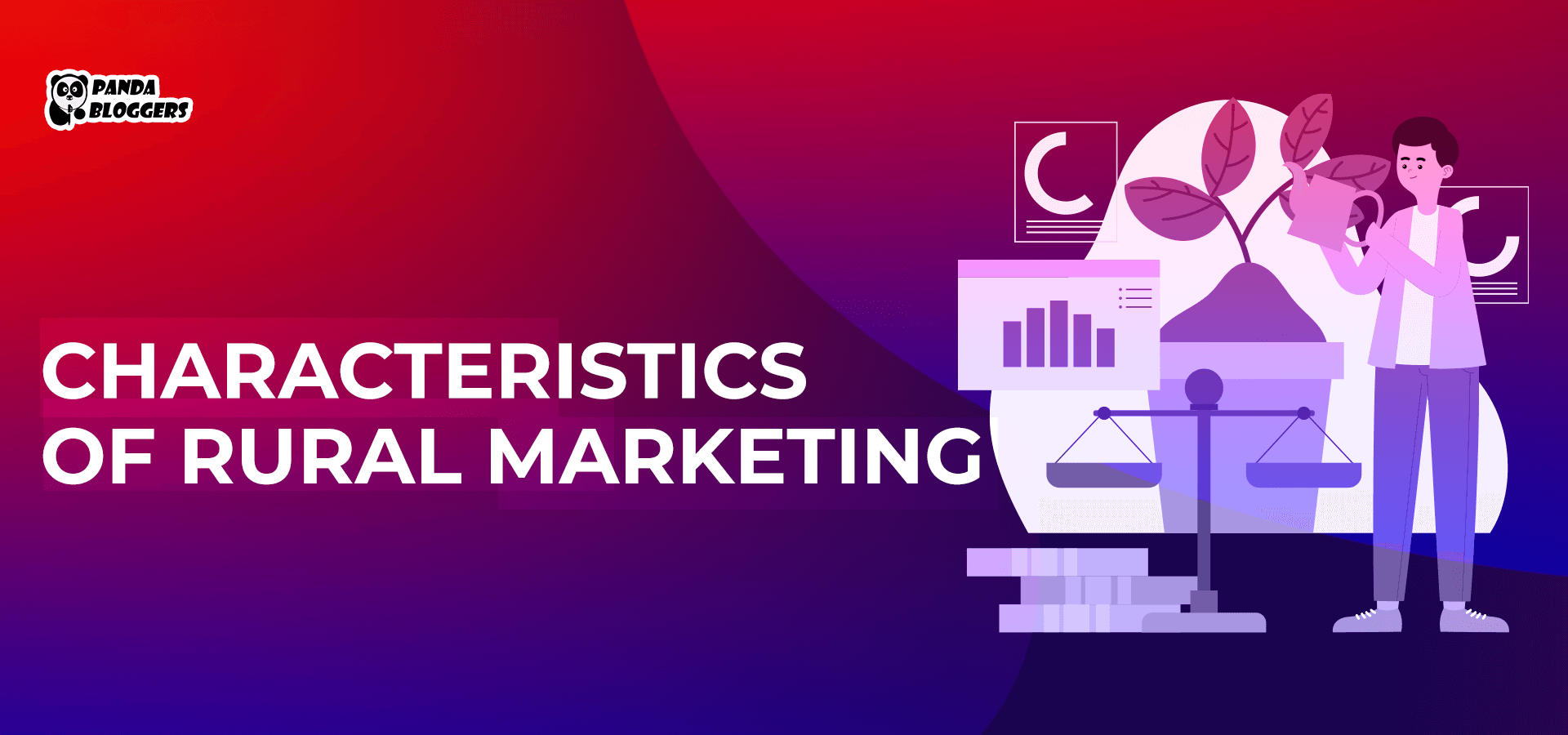 Classification of Rural Marketing
Classification of Rural Marketing
This is the seventh blog in our series on rural marketing. The first blog highlights the differences between rural marketing and urban marketing. The subsequent blogs in the series cover important aspects of rural marketing – the types of Rural marketing, the importance of Rural Marketing, scope, and challenges of rural marketing. In this blog post, we will look at the classification of rural marketing into relevant categories based on important factors.
Rural marketing creates opportunities for businesses to generate incremental revenue by promoting and distributing products/services in nonurban areas. As the rural market is extensive and diverse, companies generate demand by running different types of rural marketing campaigns.
Many companies promote rural-specific products and services using traditional marketing strategies like wall paintings, posters, hoardings, mobile vans, and kiosk setups. At the same time, the surge in smartphone ownership and digital literacy has resulted in the digital transformation of rural marketing.
At present, leading companies reach out to rural consumers using top digital marketing channels like websites, mobile apps, organic search, paid search, and social media. Hence, rural marketing tactics and strategies used by enterprises can be classified into multiple categories. We are classifying rural marketing into relevant groups or categories based on their use cases.
Classification of Rural Marketing: Important Categories or Segments
Seasonality
According to the World Bank, 75% of people living in rural areas work mainly in farming. Many companies gain rural market share by supplying seeds, fertilizer, and other agricultural and farming products. They generate demand by promoting and marketing farming and agricultural products by running seasonal marketing campaigns.
They usually run seasonal marketing campaigns before each crop session. At the same time, many companies supply existing products and introduce new products in the rural market regularly. These companies generate and increase demand for their products by running evergreen marketing campaigns.
Business Offerings
Companies and startups these days supply a variety of products/services to rural consumers. For instance, some companies supply fast-moving consumer goods (FMCGs) like milk, soda, and over-the-counter drugs, while some companies supply durable consumer goods like furniture, jewelry, toys, home appliances, and sporting goods.
At the same time, many businesses generate revenue by providing essential services like healthcare, insurance, transportation, communication, and credit to people living in rural areas. Companies promote consumer products and services using different ads, content, and channels. Hence, rural marketing strategies used by companies can be categorized based on the specific business offerings.
Retailer-Driven Initiatives
In rural markets, customers often gather information about products by interacting with retailers. Many companies drive rural marketing initiatives by engaging and incentivizing retailers. Retailers promote a product or service by sharing leaflets, brochures, and posters with consumers.
Most companies introduce and promote products in the rural markets by making retailers distribute traditional marketing materials. However, many companies generate and increase demand by enabling retailers to offer discounts and coupons to customers. Hence, rural marketing strategies can be classified into different categories based on the initiatives taken by rural retailers.
Events and Festivals
As highlighted by several studies local events are hugely popular in rural areas. Thousands of people attend popular events to experience excitement and entertainment. Popular events create opportunities for companies to create brand awareness and generate demand by reaching out to a large number of rural consumers in a short amount of time.
Many companies leverage the opportunity to boost product and brand visibility in rural markets by distributing leaflets, sticking posters, displaying hoardings, and setting up kiosks. Likewise, the demand for specific products like clothing, jewelry, and accessories increases in rural markets before popular festivals like Diwali and Dussehra.
Many brands boost sales by offering special discounts or promotional offers to rural consumers before the festive season. Most companies leverage the events or festivals by running time-bound rural marketing campaigns. However, they run a rural marketing campaign every year across villages before important events and festivals.
Traditional Media
Despite a surge in smartphone ownership, traditional media is still effective in promoting products or services in rural markets. In addition to running targeted rural marketing campaigns, many companies these days drive demand generation and sales growth by promoting products in traditional ways.
For instance, many companies rely on offline advertisement methods like banners, leaflets, full-page newspaper ads, and TV commercials. The traditional marketing tactics help them engage older consumers who do not use mobile devices regularly.
Digital Literacy
The access to smartphones has resulted in a surge in digital literacy in rural areas. Youngsters living in rural areas these days collect, evaluate, and share information by accessing search engines and social networks regularly. Also, they consume digital content in multiple formats – text, audio, video – while making purchase decisions.
The increase in smartphone ownership and digital literacy enables companies to reach out to rural consumers using popular digital marketing channels. Many companies these days engage and influence rural consumers by distributing tailored and targeted content. Likewise, a surge is noticed in the number of companies investing in localized marketing campaigns.
Companies run localized marketing campaigns successfully by tailoring ads and content according to local language and culture. Also, they gain rural market share by running location-based campaigns. Intelligence technologies enable companies to run tailor and localized marketing campaigns based on real-time information about rural consumers gathered from diverse sources.
Marketing Channel Integration
While discussing the classification of rural marketing, we must remember that most companies these days implement multiple rural marketing channels and tactics. While running digital rural marketing campaigns, they leverage important channels like websites, mobile apps, search engines, social networks, and paid ads simultaneously.
Likewise, they increase the rural marketing ROI by combining online and offline/traditional marketing tactics. Hence, many companies still promote products/services at local events and support retailer-driven promotion, while distributing digital content and ads tailored for the rural market. The combination of traditional and digital marketing blurs the line between different types and categories of rural marketing strategies.
Conclusion
Rural markets are diverse as well as extensive. Companies generate demand for products or services using various rural marketing strategies. Also, they localize rural marketing strategies by focusing on four important components of the marketing mix – product, price, promotion, and placement.
At the same time, digital marketing channels help companies reach out to rural consumers by distributing tailored content and running focused ad campaigns. Hence, we have to consider both traditional and digital marketing strategies to make the classification of rural marketing accurate.









Leave a Reply